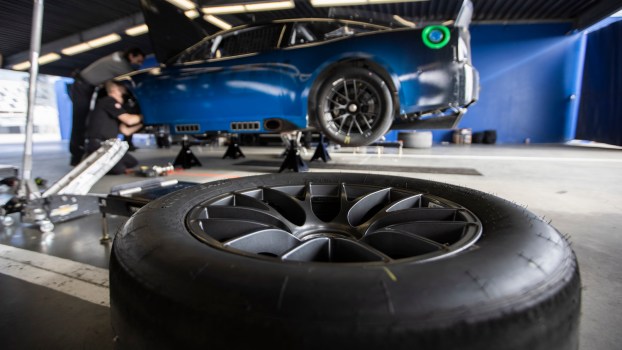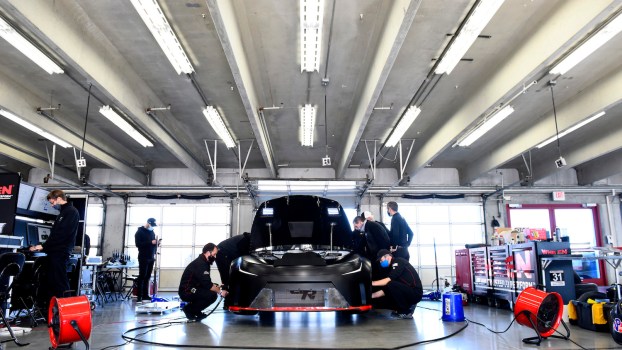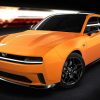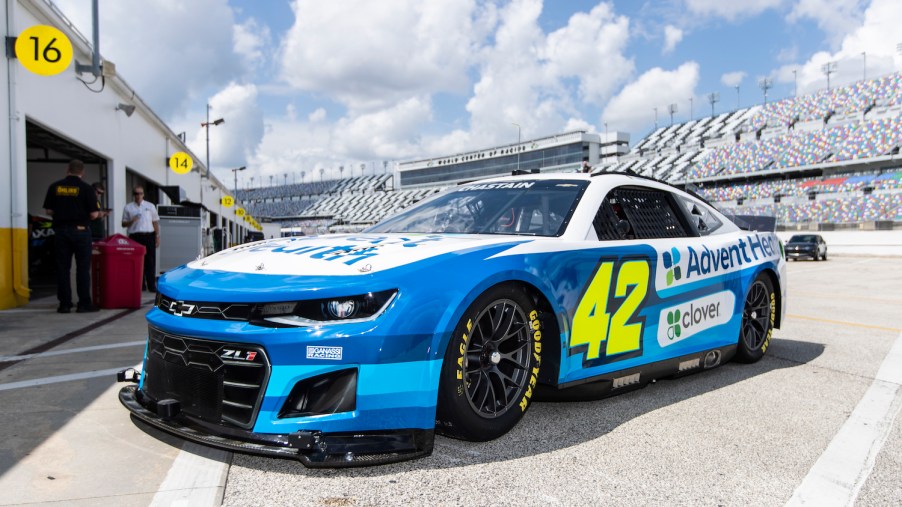
Do Next Gen Cars Still Have V8 NASCAR Engines?
The 2022 Cup season was the first to feature the NASCAR Next Gen car. The outgoing, sixth-generation stock cars feature 5.86-liter V8s built by Ford, Chevy, or Toyota. The familiar V8 NASCAR engines continue to power the Next Gen cars. But because every other aspect of the drivetrain and aerodynamics have evolved, the Next Gen V8s are allowed to make hundreds more horsepower.
The NASCAR Next Generation Car: 1000 pounds more downforce
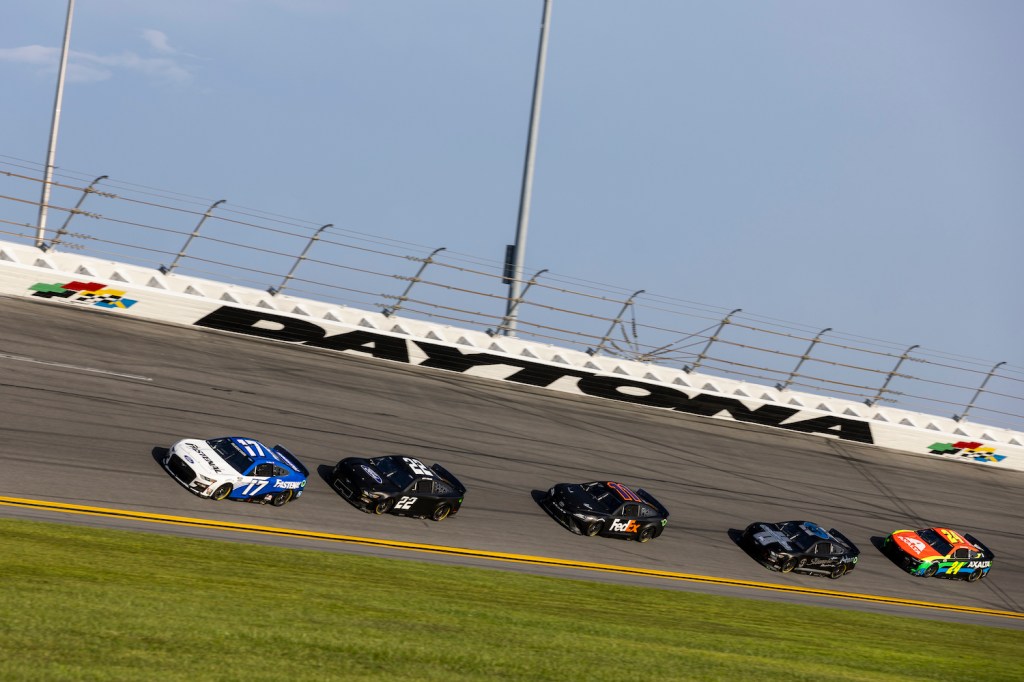
Many of the most significant changes to NASCAR’s Next Gen cars are to the vehicle’s aerodynamics. For the first time in NASCAR history, the stock car sports a full-length underwing. In addition, this aerodynamic element ends in a diffuser designed to reduce turbulence. As a result, the race car rapidly expels air from beneath the chassis.
In addition to the underwing, NASCAR reengineered airflow through the Next Gen car’s engine. After air travels through the radiator, it exits the engine bay from two vents on top of the stock car’s hood. This air then crosses over the top of the vehicle, pressing it down.
Finally, the Next Gen cars have several different splitters and spoiler options. NASCAR dictates which aero package the teams use at each track, but all options will create more downforce.
According to Bubba Wallace, these changes result in “pretty much a thousand pounds more downforce” at some tracks. Due to improved aerodynamics, the cars are more stable at speeds, especially cornering in a road course. As a result, NASCAR Next Gen cars pass more often, and many fans believe racing has become more exciting since 2022. But the added downforce increases the strain on the V8 NASCAR engines.
2022 race cars will be powered by V8 NASCAR engines making 725 horsepower
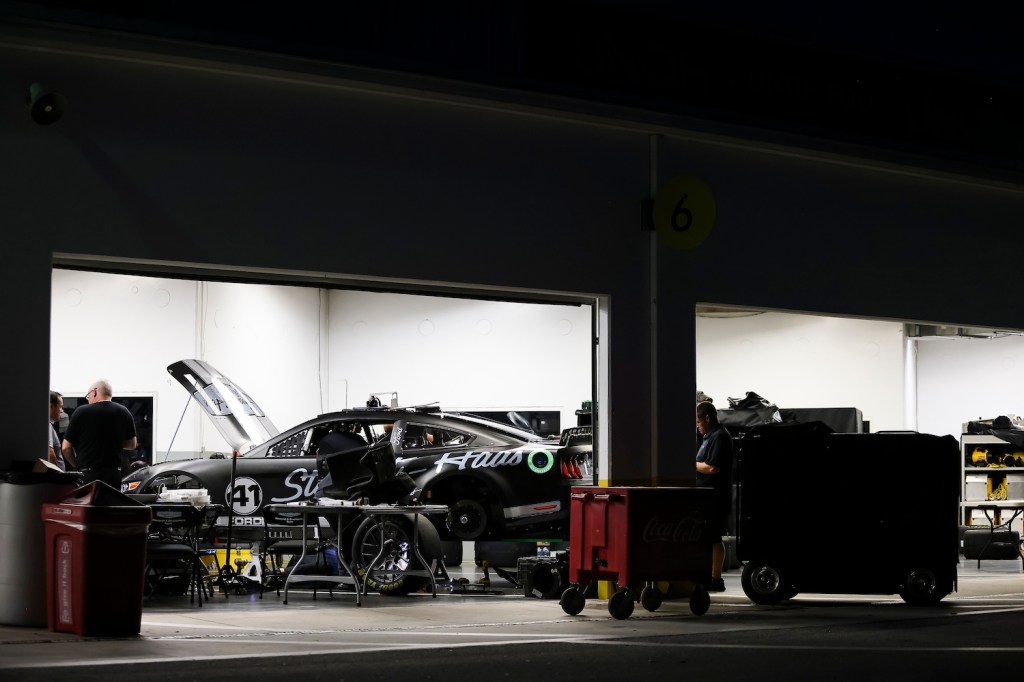
Because of substantially increased downforce, the NASCAR Next Gen cars will require more power to maintain current speeds. Since a dangerous 1987 crash, a standardized restrictor plate limits all NASCAR engines to about 410 horsepower. The restrictor plate is a 1/8th-inch thick piece of aluminum with four holes mounted atop the manifold. This plate restricts the flow of air and gasoline.
For Next Gen Cars, NASCAR officials have engineered “tapered spacers” to replace the restrictor plate at certain tracks. These spacers are about an inch thick. Instead of straight-cut holes, they feature tapered openings. These openings function as nozzles, increasing the amount of air and gasoline flow into the engine. The result: NASCAR Next Gen engines will make up to 725 horsepower.
When NASCAR assigns an aerodynamic package to the teams for each track, officials appoint a corresponding NASCAR engine limiter. These limiters will include restrictor plates or one of two specifications of tapered spacers.
NASCAR Next Gen Car Specs: transaxle and independent rear suspension
The Next Gen NASCAR engines are identical to the sixth-gen V8s. But the power reaches the road in a brand new way.
One defining drivetrain characteristic of the Next Gen cars is the NASCAR Next Gen Corvette-style transaxle. The Next Gen chassis combines the rear axle and the transmission into a single weight-saving unit: the transaxle. This drivetrain better balances the vehicle’s weight front-to-back, improving handling. The transaxle is a typical sports car layout, used by Chevrolet for the past three generations of the Corvette.
Gone is the solid rear axle. Instead, the NASCAR Next Gen transaxle send spower to the wheels via two smaller half-shafts. Because the half-shafts can move independently, the rear tires also move on independent suspension.
Teams can now adjust the camber of the rear tires, improving grip at highly banked oval courses such as Bristol. The independent rear suspension is closer to the stock Camaros, Mustangs, and Camrys that the NASCAR race cars represent.
Finally, the new half-shafts will spin 18-inch, forged aluminum wheels. These new rims are lighter and better at dispelling brake heat than the outgoing steel rims. In addition, they will wear low-profile Goodyear tires.
Next, find out all the things that make NASCAR Next Gen Cars more stock than Sixth-Gen, or read up on all the technologies that make the NASCAR Next Gen cars possible in our full series:
- NASCAR Next Gen Car Ultimate Guide
- NASCAR Next Gen transaxle
- NASCAR Next Gen sequential shifter
- NASCAR Next Gen alloy rims and mono-lug
- NACAR Next Gen digital rearview mirror
You can see how the NASCAR Next Gen car’s engine works with the rest of its design in the video below:
